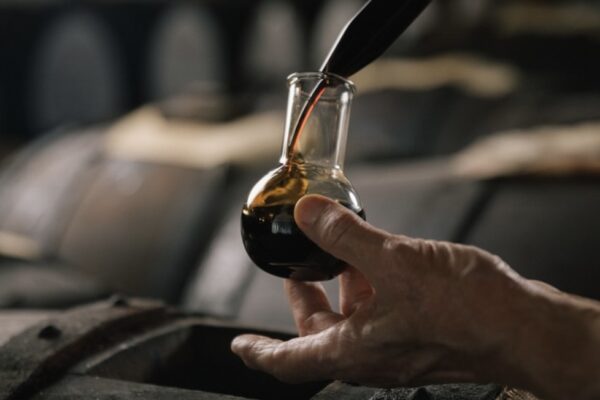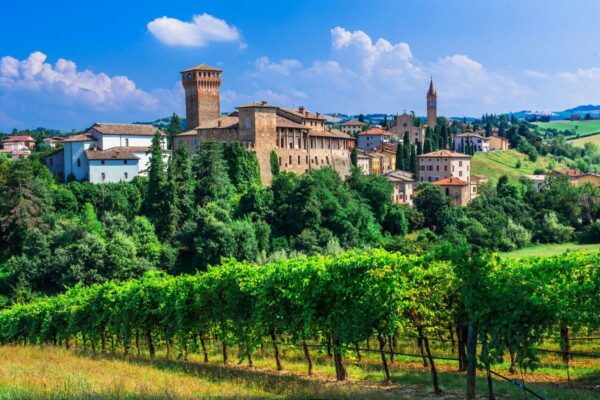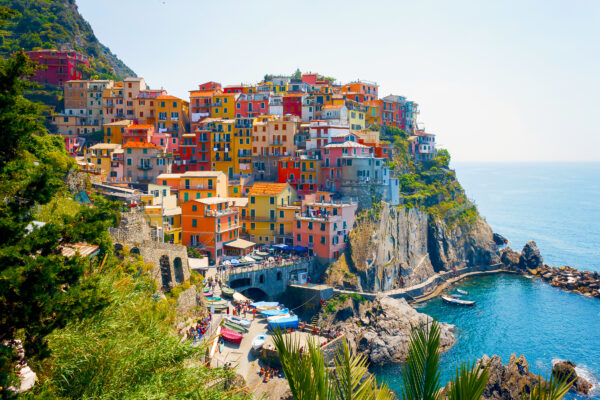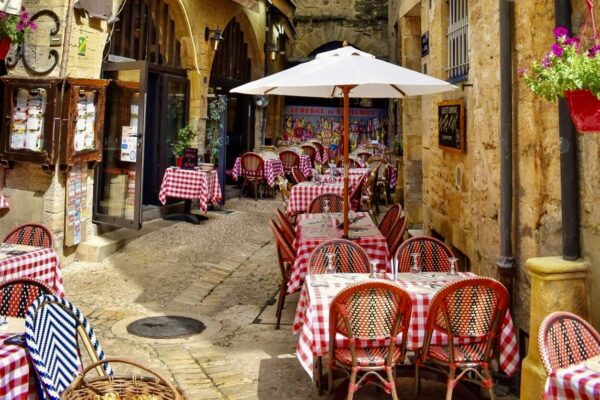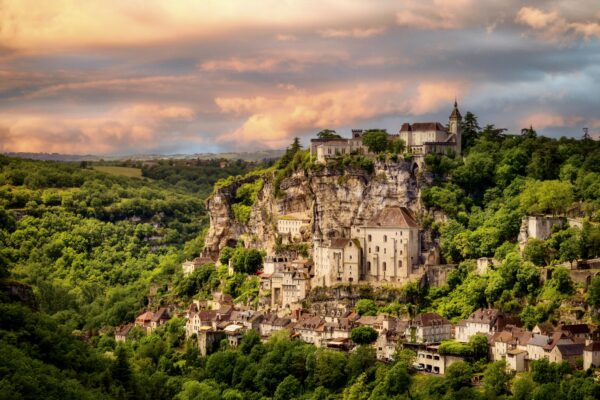Cinque Terre: Dos & Don’ts

by Marla Norman and Michel Thibault
A few years back, flipping through travel magazines, I spotted photographs of Cinque Terre. Images of these brightly colored villages clinging to hillsides along the sapphire blue Mediterranean were so striking — I was immediately infatuated. Not surprisingly, thousands of other travelers have had the same reaction. More than 2.4 million tourists visit these tiny villages annually.
And in addition to the often impenetrable crowds, cars are prohibited in most areas. The villages can only be reached by train or ferry. For younger, athletic visitors, 75 miles of hiking trails are also available. (Obviously not an option for some of us!)
The Good News: Michel and I are just back from Italy and have lots of recommendations for managing a vist to Cinque Terre.
CINQUE TERRE BASICS
Cinque Terre (Five Lands) is the collective name of the villages along the Ligurian coast: Riomaggiore, Manarola, Corniglia, Vernazza and Monterosso. Here, the terrain is so steep that for centuries footpaths were the only way in and out.
Cultivation of vineyards and olive trees began in the 12th century — an arduous task to establish stone-walled terraces on steep coastal hillsides. Fishing was another source of revenue, but less important than agricultural endeavors. The area remained inaccessible, except by sea, until the Genoa-La Spezia railway was built in the 1870s.
Tourism began in the 1970s and has grown exponentially ever since. Interestingly, only a few houses prior to this era were painted in bright colors. They served as a navigational aid for fishermen out at sea. Once locals realized just how photographic the jumble of colors were, painting became an instant tradition. Later in 1997, the area was designated as a UNESCO World Heritage Site.
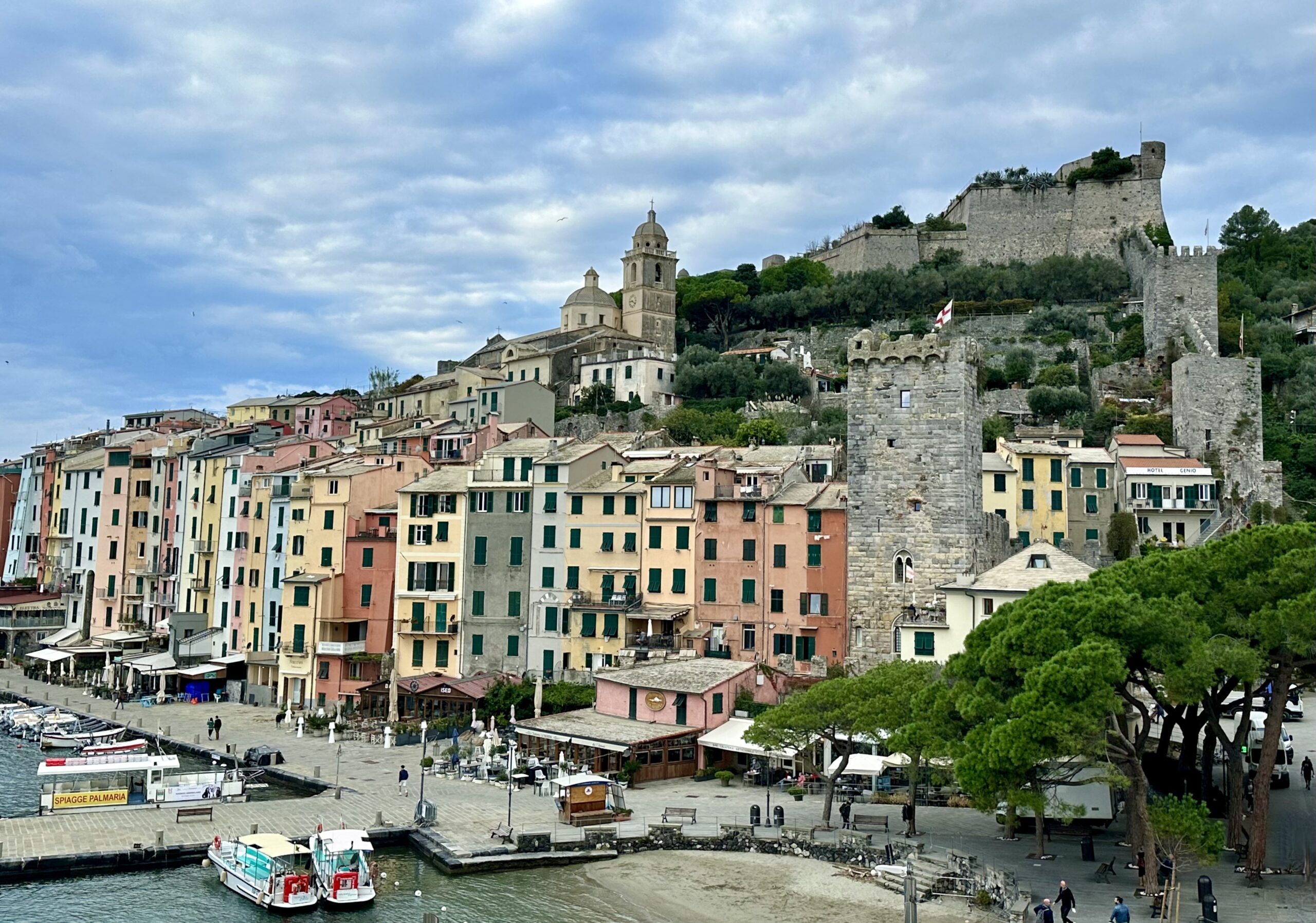
Porto Venere – often referred to as Sesta Terra (The Sixth Land). Photo by Michel Thibault
Adjacent to the Cinque Terre is Porto Venere, often referred to as Sesta Terra (The Sixth Land). A significant commercial and cultural center, Portovenere is much larger than the five villages and also quite a lot older, dating back to the Roman period in the first century BC.
DOS & DON’TS
If at all possible, DO NOT visit Cinque Terre in the summer. Try to schedule a visit in early March, when hotels and restaurants open for the new season, or in late October, just before they close.
Make PORTO VENERE your base. This bustling little town, often referred to as Sesta Terra (The Sixth Land), is just as scenic as the famous five villages, but also an easy drive from any point in Italy. The Grand Hotel is a great choice for lodging. Rooms are spacious and nicely appointed with beautiful views of the harbor. There is also ample parking — an essential feature — and the hotel is conveniently close to the ferry dock for excursions to Cinque Terre.
And don’t short change Porto Venere, also a UNESCO Heritage Site and well worth exploring. Take a walk along the old city walls, first constructed by Romans and later rebuilt in the 11th century to defend against Saracens, pirates and assorted invaders. Stop in at Chiesa di San Pietro, an impressive landmark built on the site of a Roman temple dedicated to Venus. (The name Porto Venere is a tribute to the goddess.) Back in town, stroll through the medieval streets to find cute boutiques and great dining.
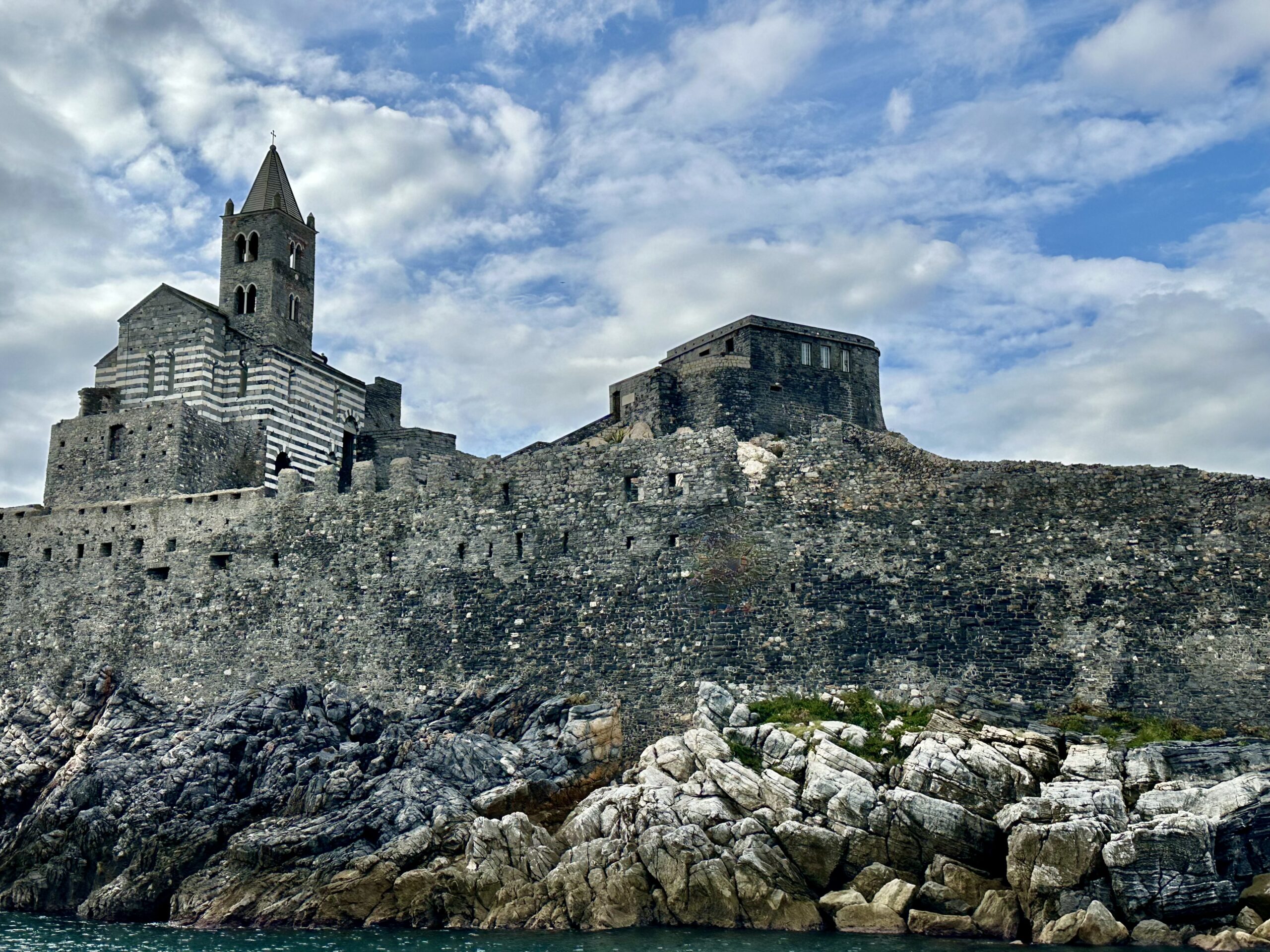
Chiesa di San Pietro and remains of a Roman temple dedicated to Venus in Porto Venere. Photo by Marla Norman.
When you’re ready to visit the Cinque Terre, grab a ferry (Click here for ticket information) from Porto Venere to RIOMAGGIORE. Nestled between two terraced hillsides that descend dramatically into the sea, Riomaggiore is the first village in the chain. Wander the streets and maybe grab a coffee at one of the cafés. Marvel at the scenery and, if you’re there in summer, the number of other visitors pouring off the boats!
At the base of the village, take the Via del’Amore trail to the next village, Manarola. Be sure you’re on the correct path – actually easy to spot, since it runs along the oceanfront. We, unfortunately, got turned around and walked to the top of Riomaggiore. Quite a trek! Our consolation was the panoramic view above the village.
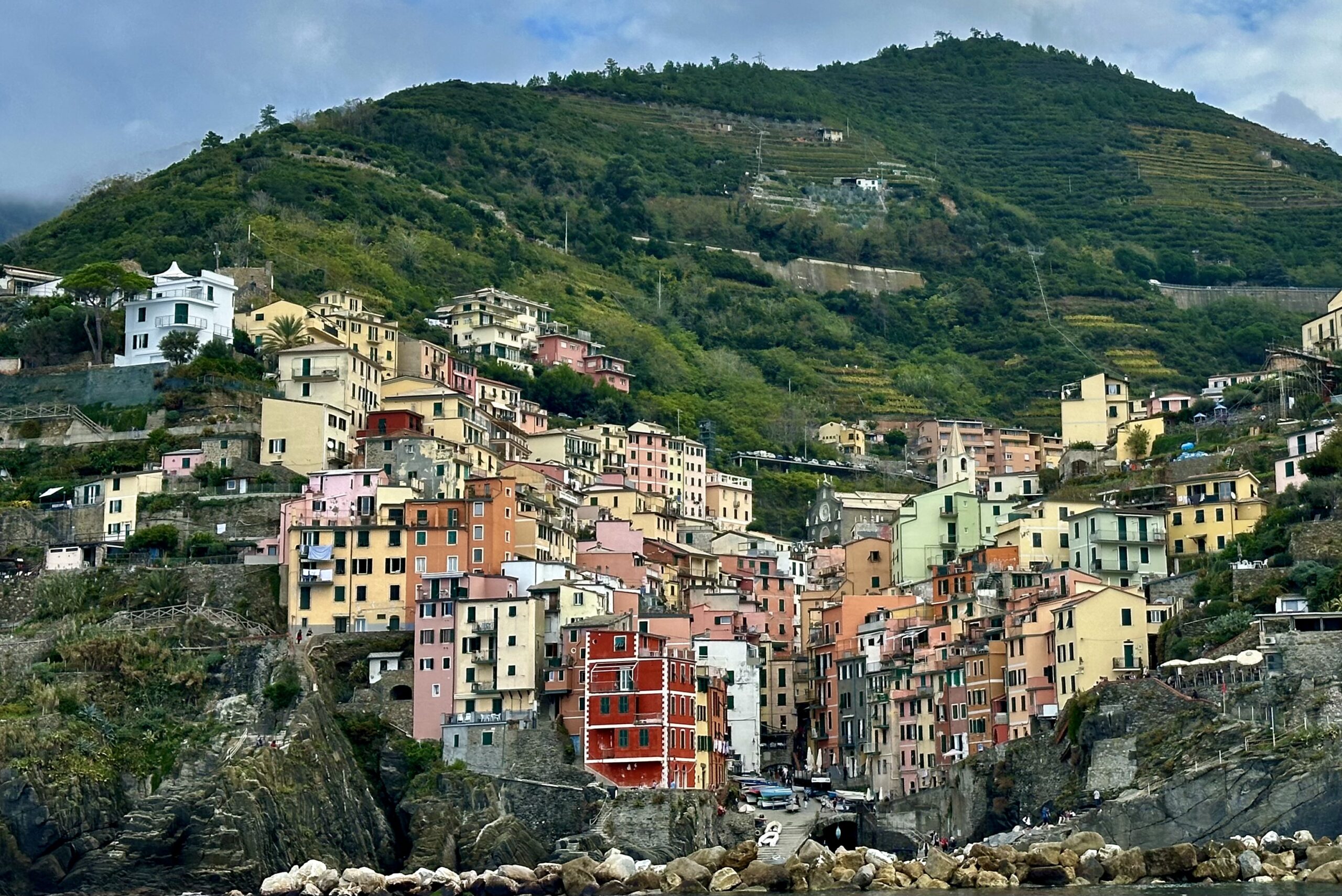
Riomaggiore – situated between two dramatically steep hillsides. Photo by Marla Norman.
After walking up to the top of Riomaggiore and down again, we Seniors were too tired to hike the Via del’Amore. So, we took the train instead – an excellent option as it turned out. Trenitalia operates the “5 Terre Express.” Super fast, cheap and efficient, the train runs every 15 minutes from 5:00 a.m. to 11:30 p.m. The only downside is that you can not reserve seats in advance.
In MANAROLA, the next stop in the chain, centuries-old terraces still protect abundant vineyards and olive trees, making this village the center of wine and olive oil production in the region. Streets are lined with shops selling local products. Pop in for tastings and samples. Also be sure to visit the bell towers of Chiesa di San Lorenzo, a distinctive landmark.
Next up is CORNIGLIA, perched high above the sea on a cliff. This itty-bitty village is the smallest of the Cinque Terre and because of its hilly location there is no port. To visit, take the train and then climb 377 steps to the top. Extraordinary views are an instant reward. And the fact that Corniglia is tougher to reach means there are fewer tourists, making for a more authentic experience.
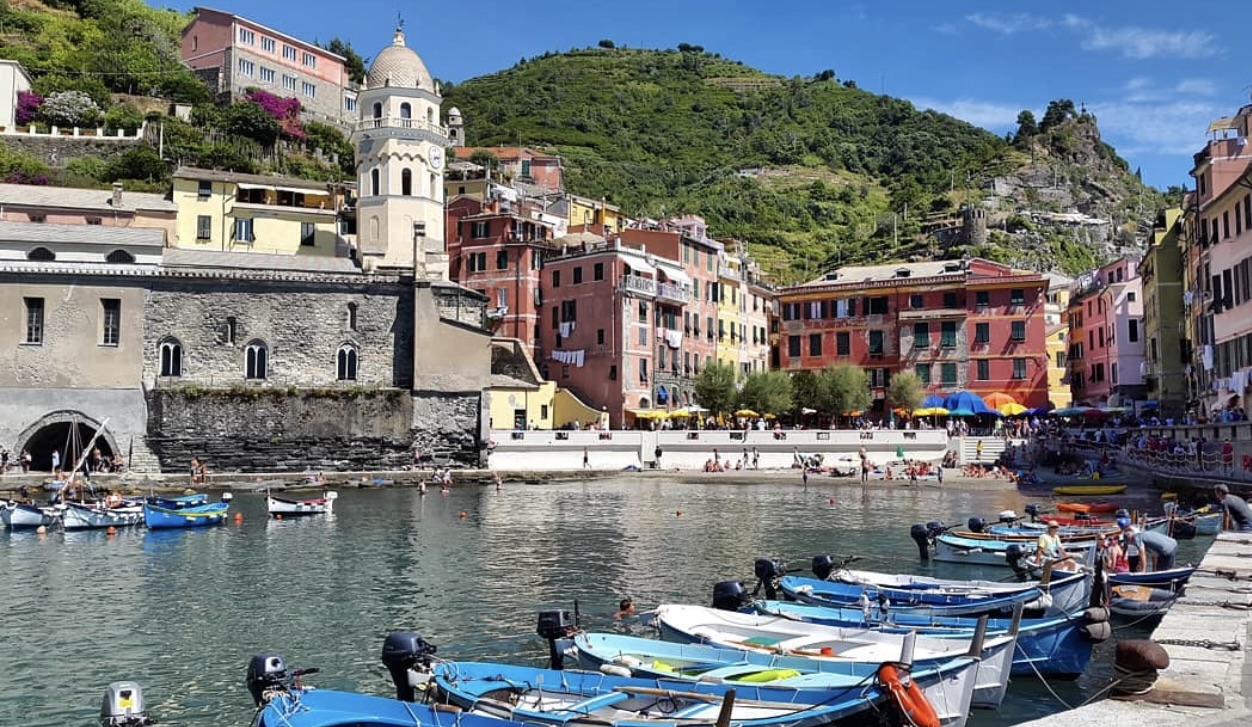
Vernazza, with its historical towers, beaches and natural harbor, is considered the most picturesque village of the Cinque Terre. Photo courtesy of Cinque Terre Turismo.
VERNAZZA, adjacent to Corniglia, is considered the most picturesque of the chain. This village boasts a small harbor, the requisite brightly painted buildings, and a majestic cliff setting. There are also remnants of impressive fortifications, including the Doria Castle and the 11th century watchtower Belforte. Piazza Marconi sits next to a pretty beach.
Take a break at one of the many cafés to enjoy the sights and sounds — there will be plenty, as Vernazza’s picturesque reputation also makes it the liveliest of the five villages. You could also opt to escape the crowds and climb (again) to Belforte. There, enjoy the sights with a cocktail from the restaurant at the top of the tower.
The largest of the Cinque Terre and our last stop was MONTEROSSO, with both a modern seaside resort and a medieval old town. Ancient citadel walls separate the two “personalities.”
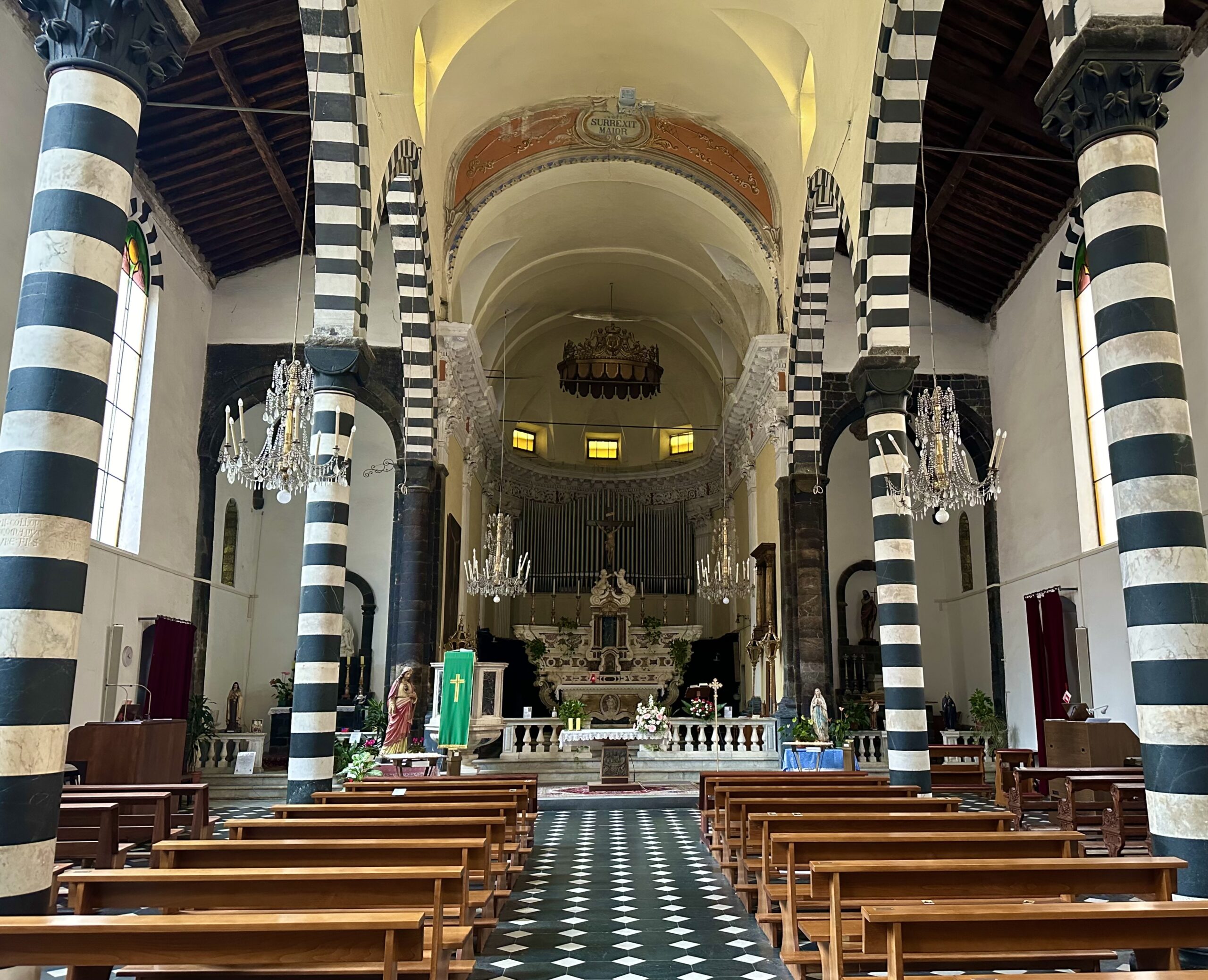
San Giovanni Battista in the heart of Monterosso’s medieval old town. Photo by Marla Norman.
Here, we particularly enjoyed exploring the medieval city and San Giovanni Battista, one of the region’s oldest churches. This modest structure dates back to 1220 and features Genoese-Gothic architecture, with traditional black and white striped façades. The interiors are solemn, almost plain. The day we visited it had begun to rain, so it was especially quiet and meditative —a sweet moment we’ll remember.
After leaving the centuries-old church, we were on the lookout for restaurants. I’ll let my travel partner and food-wine expert take over from here…..
DINING IN CINQUE TERRE
Food wise, I have to admit Marla and I were pleased to be seaside. After so many pasta meals in Milan, Parma, Orvieto, etc. I was ready to scream!
Within the villages of Cinque Terre, one of our favorite experiences was Ristorante Ciak – located in the heart of Monterosso, just steps away from San Giovanni Battista. I have to say, our experience began poorly, as the manager seemed a little unpleasant at first. I guess too many folks want a drink in the restaurant and the staff only wants customers who will spend more. Or maybe because it was the end of the season he was ready to strangle diners!
Our lunch included two nice entrees: a clam and mussels pasta in red sauce served tableside and a baked fish with roasted potatoes and tomatoes. The better dish though, was the gnocchi al pesto which we shared as an appetizer — lots of garlic and Genova Pesto with fresh basil. All very pleasant, married to a cold glass of beer. Sometimes wine just doesn’t do it.
Back in Porto Venere, we really hit the jackpot!
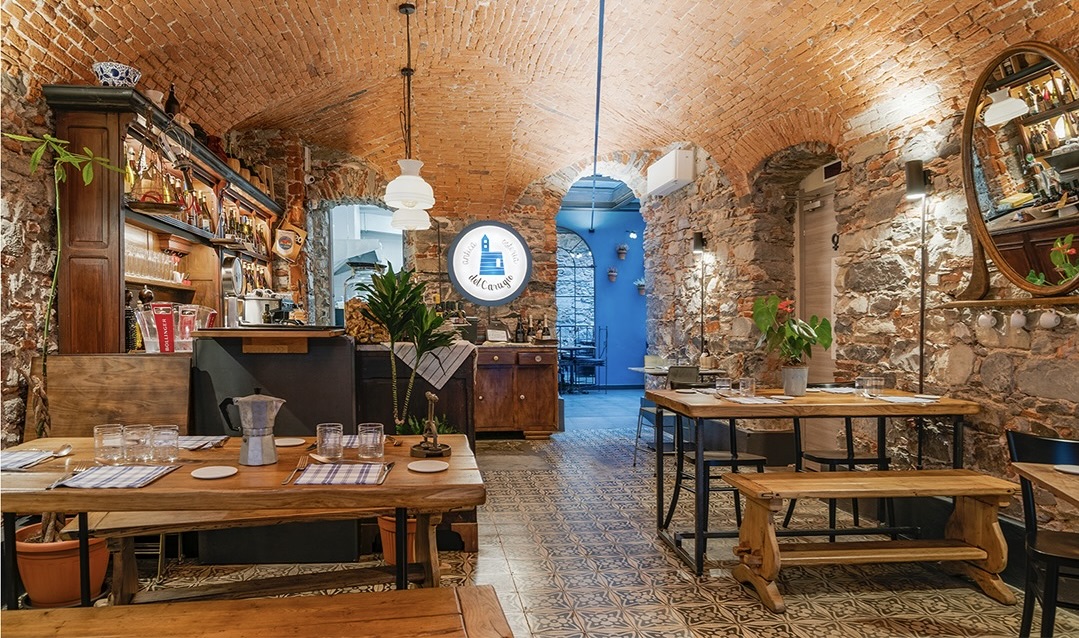
Antica Osteria del Carugio for great dining in Porto Venere. Photo courtesy of Antica Osteria del Carugio.
Antica Osteria del Carugio was deserted when we first walked in, but shortly after we were seated, the restaurant was packed, obviously known for its great menu. We ordered smoked mullet and anchovies in cold pressed olive oil, both terrific. But it was the soup — La Mess-Ciua — that really won us over. Composed of chickpeas, cannellini beans and spelt, it was the perfect dish after a rainy ferry boat ride. For entrees, the better one was very much the baked sea bream with Taggiasca olives.
Another superb experience was at Porto 82, a seafood restaurant next door to Osteria del Carugio. Both a seafood market and a restaurant, a concept we enjoy as it usually guarantees fresh fish. One winner there was the Trofie al Pesto. Even after complaining about too much pasta, I still ordered that dish! The combo of freshly made pasta with basil pesto in olive oil was something I will remember for a long time. All the flavors were there, but they were subtle, not in your face.

Porto 82 – some of the best seafood and pasta in Porto Venere. Photo by Marla Norman.
The biggest hit at Porto 82 was Marla’s dish – Lobster Spaghetti. She was so taken with it, she asked the entire staff to give her the recipe until someone relented. I must have used up a half loaf of bread to sop up the sauce. To make things even better, prices were very modest and the staff super friendly. It’s a very small space, so be prepared to chat up your neighboring tables. But heh! This is Italy, you have to be nice.
WINES OF CINQUE TERRE
There are a number of wines produced in Liguria, with the better ones being whites. Normal, it’s by the sea. We opted one evening for the Lambruschi Colli di Luni Vermentino and it matched the Trofie al Pesto quite well. We also sampled a glass of Pigato, a more unusual style, but it was also very pleasant.
We asked the staff at Porto 82 what their favorite red was and they all recommended Rossese di Dolce Acqua. We purchased a bottle of that wine from Testalonga and indeed, we thought of it as a very stylish wine, almost reminiscent of a blend between Burgundy and Bordeaux. To match our divine lobster spaghetti, it worked well!
A final “DO” – Try the dish yourself with the recipe Marla coaxed from the staff at Porto 82!

Spicy Lobster Spaghetti from Porto 82, in Porto Venere. Delizioso!
Spicy Lobster Spaghetti
Ingredients:
12 ounces spaghetti or linguine
2 tablespoons olive oil
2 shallots thinly sliced
3 garlic cloves smashed
1 pint cherry tomatoes halved
2 tablespoons tomato paste
Sea salt to taste
½ teaspoon red pepper flakes
½ cup white wine
1/3 pound lobster meat
1/3 cup basil leaves roughly torn
1 lemon cut in wedges
More olive oil as needed
Preparation (15 minutes more or less)
1. Bring a large pot of salted water to boil over high heat. Cook the pasta according to package directions, reserving ¼ cup of pasta water. Drain and set aside.
2. Meanwhile, heat the olive oil in a large skillet over medium heat. Sauté the shallots and garlic until the shallot is translucent, 3 minutes. Add the cherry tomatoes and continue to cook, stirring occasionally, until they are soft and have released their juices. Stir in the tomato paste and season with ½ teaspoon salt and red pepper flakes. Cook for one minute more. Pour in the wine and simmer until reduced by half, about 1 minute. Carefully fold in the lobster meat and a little extra olive oil. If beginning with cooked lobster, remove from the heat. If raw, sauté for 3 minutes until tender.
3. Add the reserved pasta and pasta water to the pan and toss to combine. Transfer the spicy lobster pasta to a platter (or serve directly from the skillet) and top with the basil. Enjoy immediately with lemon wedges on the side.
Buon Appetito!
See more of our travels in Italy: Venice, Florence, Torino




